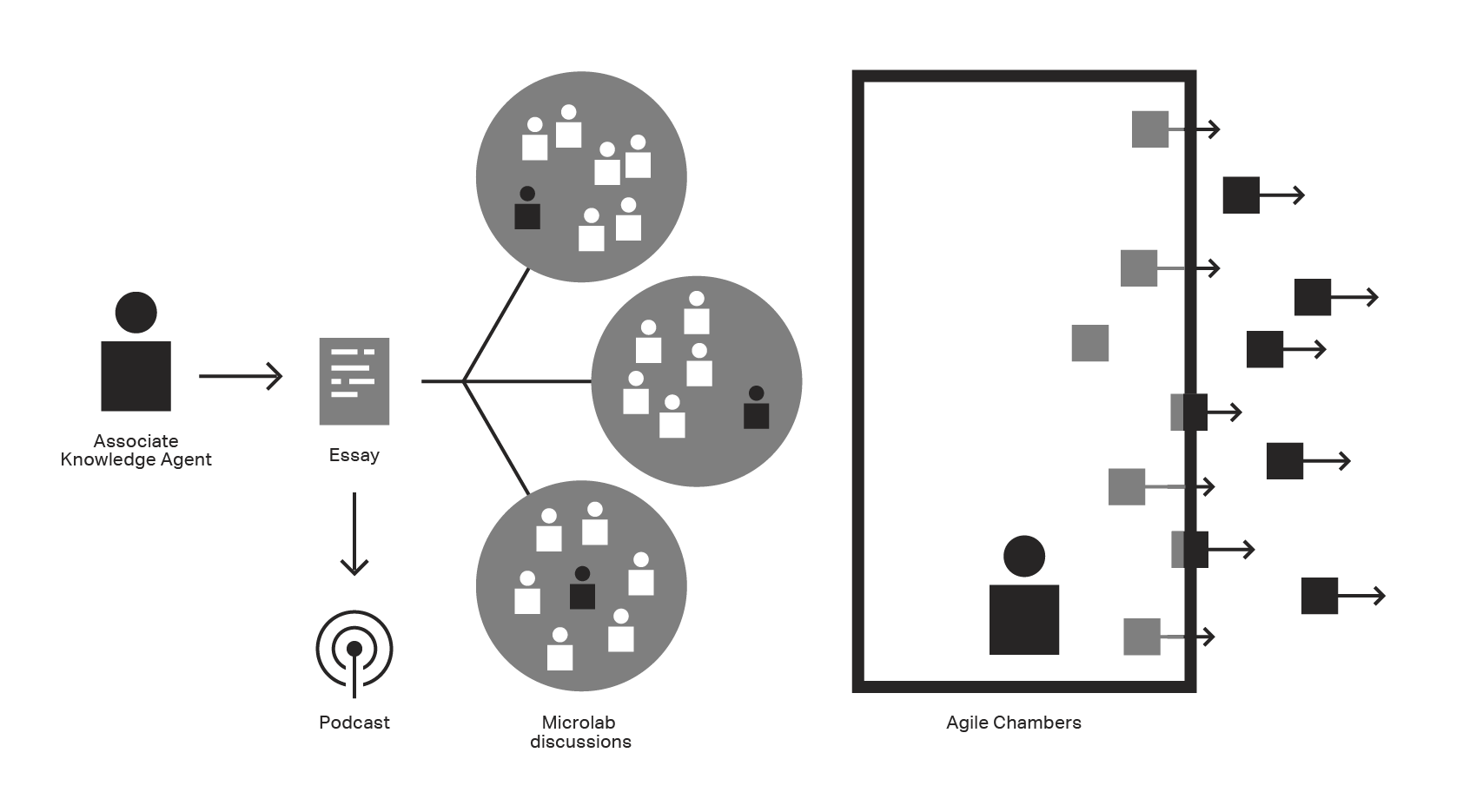Intention
A Microlab is a workshop format developed, tested, and evolved as part of the Agile Opera Project.
Microlabs operate as responsive, semi-structured spaces, championed by lead researchers and collaboratively guided by participants. These interdisciplinary workshops build an evolving knowledge network based on trust, communication and shared goals. Recognising collaboration as an intrinsically social process, Microlabs provide space for diverse research practices, including discussion, creative play, mapping exercises, reflection and interaction. The workshops also connect to Agile Chambers, a week-long program that includes Microlabs, open labs, performances, presentations and discussions.
| Microlab | Date | Program/topic/theme |
|---|---|---|
| Microlab 1 | 16-17 April 2015 | First implementation of Microlab structure; early discussions of ‘platform’; social role and function of digital technologies; research tools we might use; ‘long-tail’ economic issues. |
| Microlab 2 | 15-16 October 2015 | Physical and digital (coded) spaces (experience, platforms, vocabulary, issues); Circus Oz Living Archive; mapping audience relationships; current funding issues (NPEA); liveness; expectation management; platform research. |
| Microlab 3 | 14-15 April 2016 | Experience and neuroscience (Hooper); Artistic Associates model & strategic plan update; digiworks; intrinsic/extrinsic value – Trip Advisor for the Arts (Gruen); communication to arts & academic audiences; preparing for Agile Chambers. |
| Microlab 4 | 8 December 2013 | Artistic production as ecology (organisation, audience, artist); documentation, archives, platforms & digital resonance; group mapping exercises. |
Application
Microlabs weave together the research environment of a university with the high-intensity production environment of a small arts organisation. An evolving calendar of one-and-a-half day workshop schedules, each closely connected to Chamber Made performance activities, is led by a group of five research associates from diverse disciplines, with guest research associates participating on a flexible basis.
For the project the Microlabs produced an expanded interdisciplinary knowledge network of twenty-three practitioners, including research associates, creative industry experts and industry partner, representing twenty-six disciplines across intersecting areas of interest.
Microlabs create space for floating and exploring ideas, reflection and social interaction. Ideas discussed gain dynamic energy, and spin off into written, performed and published outcomes, including commissioned contributions from guests and key researchers.
Creative activities
During the evolution of the Microlab structure we adapted and refined the approach to match the current context of the project. Looking at four of the completed Microlabs reveals the value of bringing into the project techniques of mapping, sketching and drawing to enable participants to create shared artifacts that unpack and communicate elements of the project at large. At the macro level we first introduced and examined the project, followed by an investigation of the organisation focussing on artistic production. The process culminated in a mapping exercise drawing diagrams of relationships: audience/organisation, organisation/artists, artists/audience.
Value
Microlabs are a critical component of the Agile Opera Project’s success in supporting the industry partner, Chamber Made, to develop a versatile, ever-evolving aesthetic and pragmatic set of relationships with digital technology that serve artwork, company and audiences. Digital technology is an integrated voice in the creative process, mediating and amplifying the company’s artwork and practice.
Industry-academia research partnerships are acknowledged as complex undertakings that present both opportunity and challenge. The complexity originates in the intrinsic—and essential—merging of cultures. As effective components of a complex and multifaceted research project, Microlabs offer a rigorous and adaptable methodological approach helping to answer research questions and generate outcomes that deliver value and benefit to all partners.


